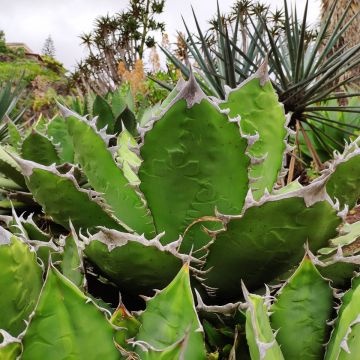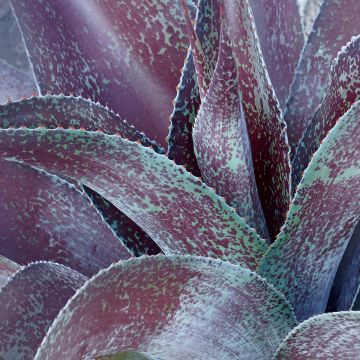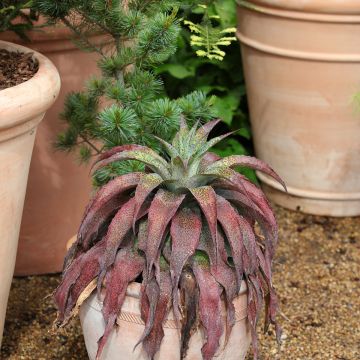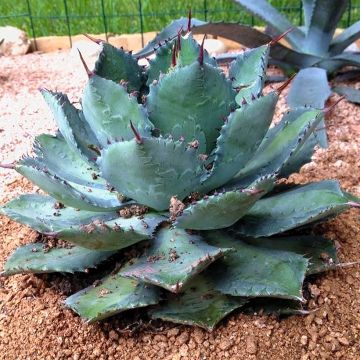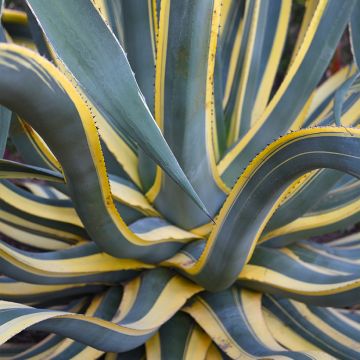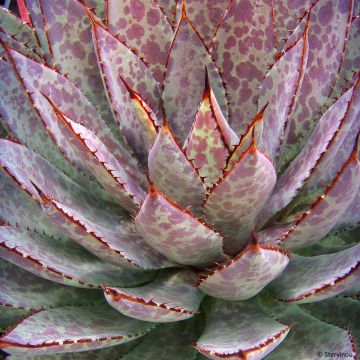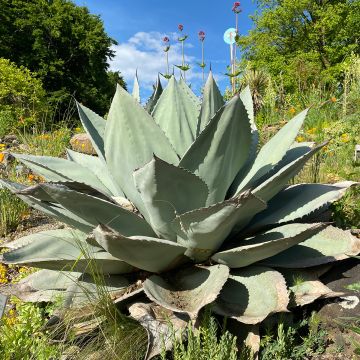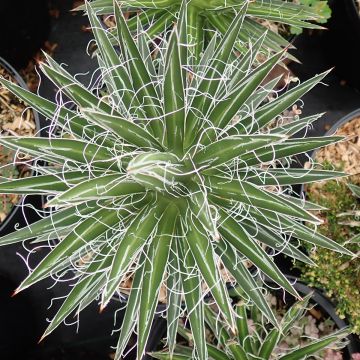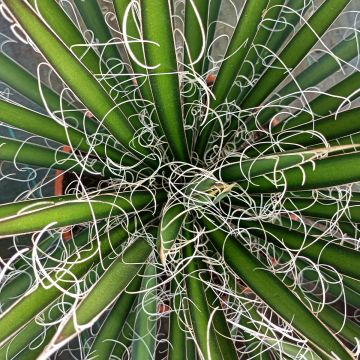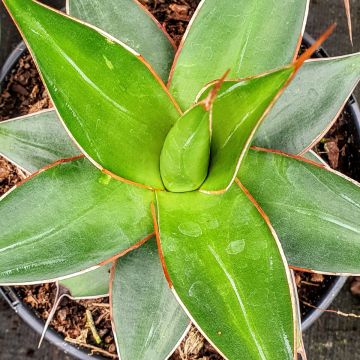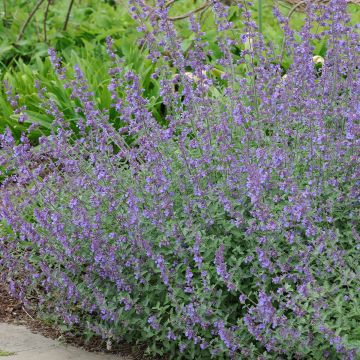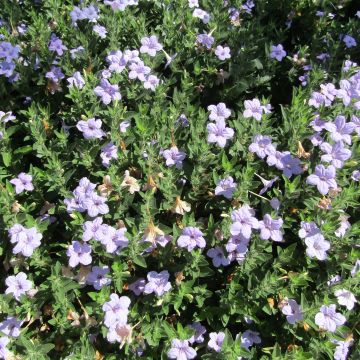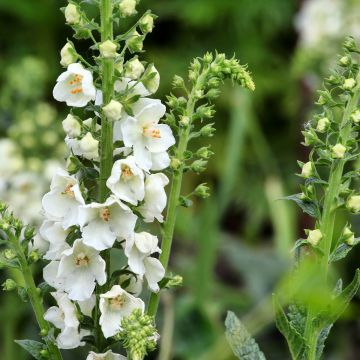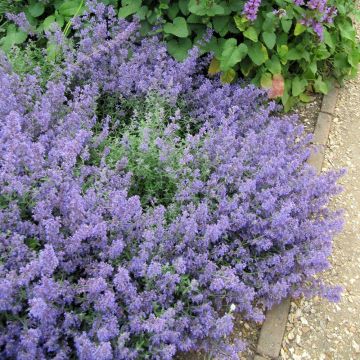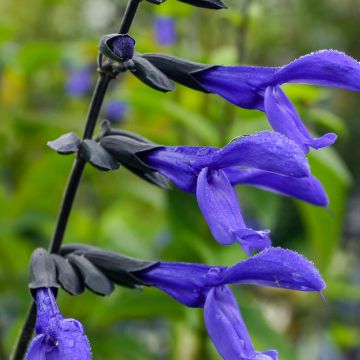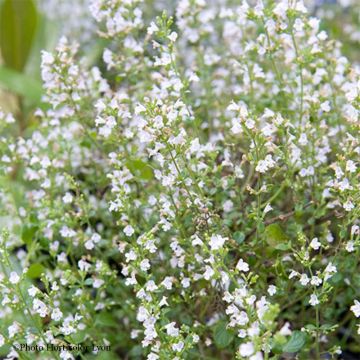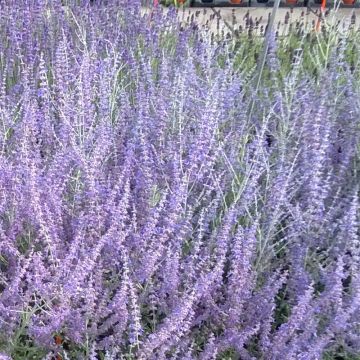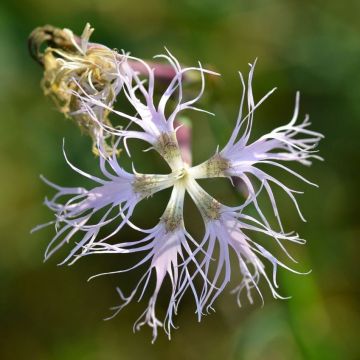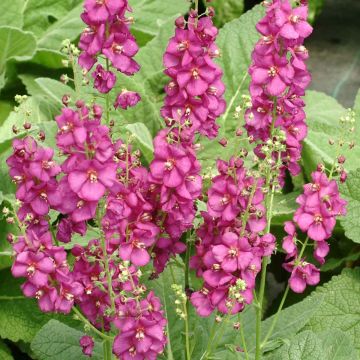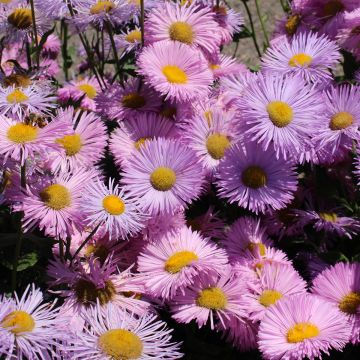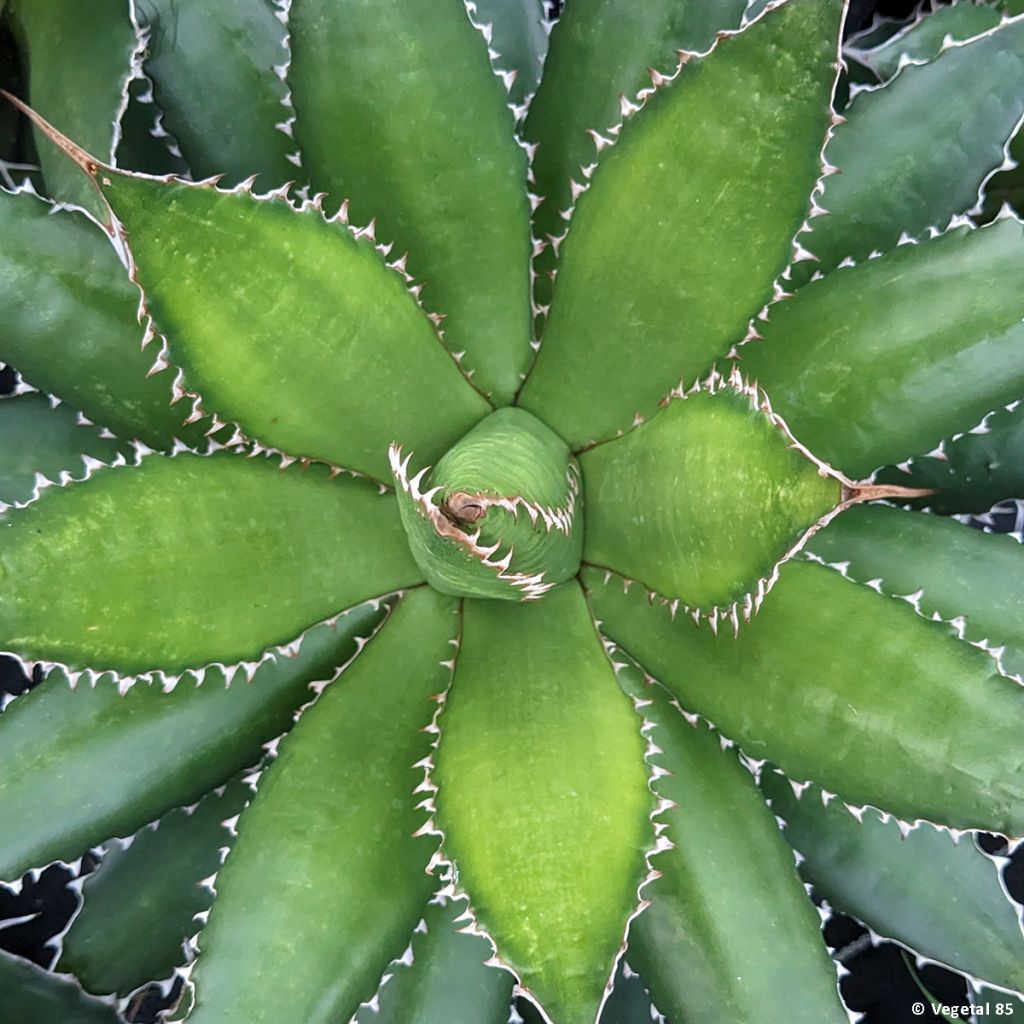

Agave horrida
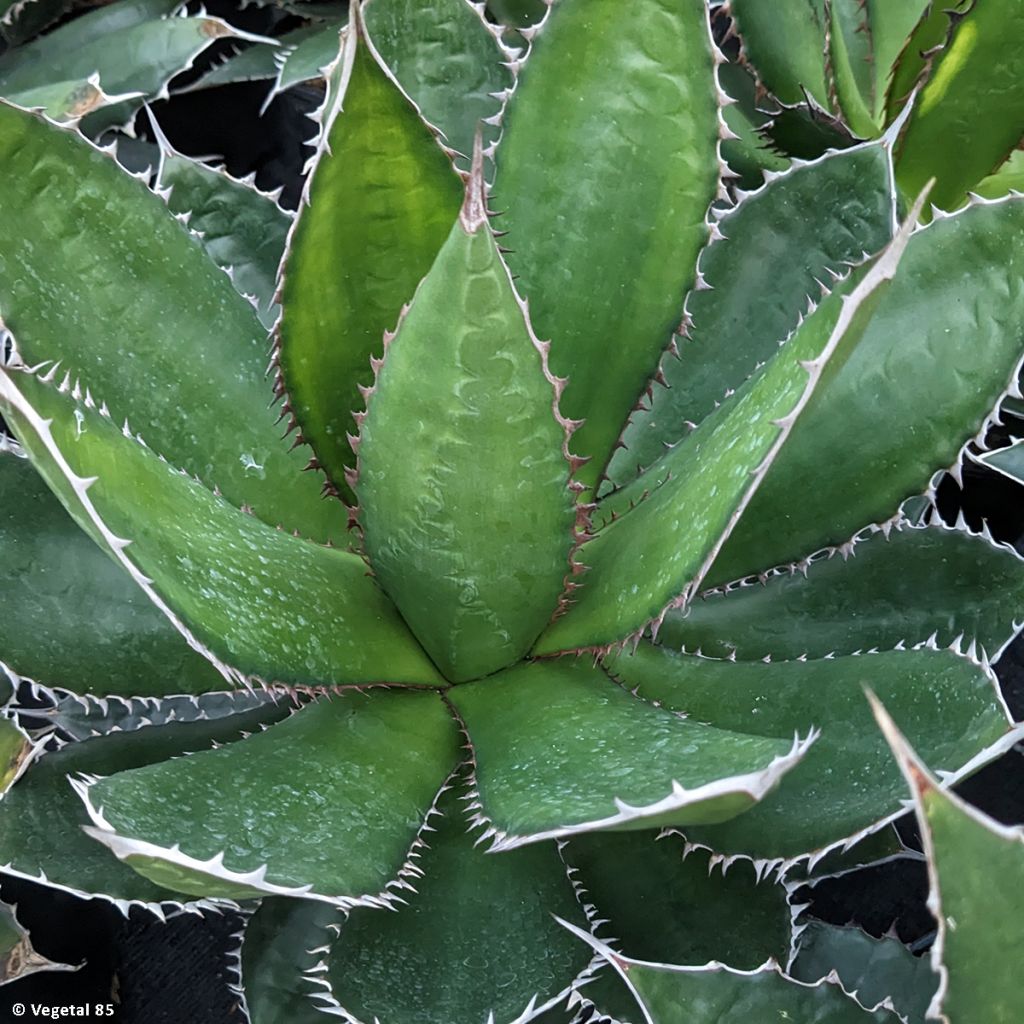

Agave horrida
Agave horrida
Agave horrida
This item cannot be shipped to the selected country
Delivery charge from €5.90
More information
Schedule delivery date,
and select date in basket
This plant carries a 12 months recovery warranty
More information
We guarantee the quality of our plants for a full growing cycle, and will replace at our expense any plant that fails to recover under normal climatic and planting conditions.
From €5.90 for pickup delivery and €6.90 for home delivery
Express home delivery from €8.90.
Does this plant fit my garden?
Set up your Plantfit profile →
Description
Agave horrida is a spectacular species due to the geometric regularity of its large rosette. Its leaves are densely imbricated, forming a ball as wide as it is tall, rarely exceeding 1m (3ft) in adulthood. The dark green leaves are armed with light grey spines along their edges, giving the plant a somewhat fierce appearance, which is highly appreciated by enthusiasts of the genus. Being a lover of sun and heat, this species will grow in warm climates. However, it is quite hardy so it can also grow in colder regions. It will thrive in most poor and well-drained soils and can potentially be grown in large containers to be brought indoors during winter in excessively cold climates.
Agaves belong to the Asparagaceae family (formerly Agavaceae), which comprises over 600 species and about 20 genera, many of which are ornamental (Yucca, Cordyline, Sansevieria, Nolin). Native to Mexico, Agave horrida grows naturally in two specific regions: the state of Morelos in the country's centre, and the coastal state of Veracruz to the east. Two very similar forms are distinguished: Agave horrida horrida (Morelos) and Agave horrida perotensis (Veracruz), with slightly narrower leaves and a more open habit due to the peripheral leaves descending towards the ground and spreading out.
Agave horrida is characterised by its very dense rosette, which has a perfect geometric shape. Its elongated leaves, lanceolate and pointed at their tips, slightly widen in the middle. Concave in section, they stand upright towards the sky and gradually lean outward as new leaves appear, eventually forming a perfect ball as wide as it is tall. It grows relatively fast compared to other species, and over time, it forms specimens of 80cm (32in) to 1m (3ft) in diameter, rarely more. When young, the leaves are a slightly glossy medium green, but they turn into a darker, more matte green as they age. Sometimes, a slightly lighter longitudinal band can be observed along the leaves.
Spines adorn the entire perimeter of the leaf, reminiscent of shark teeth. They start off brown-red or occasionally black, and as they age, they turn light grey, almost white. These spines can be straight, curved, or even undulate, but always in the same plane as the leaf. While they can be formidable for hands, they greatly contribute to the plant's aesthetic appeal.
Unlike other species in the genus, this agave generally does not produce offsets at the base. This makes it easier to grow in containers in regions with cold winters (though attention should be paid to the weight of the plant, as it can become heavy over time). Grown in well-drained conditions, Agave horrida can withstand temperatures down to -10 to -12°C (14 to 10.4°F), which allows it to acclimatise beyond the Mediterranean region. It accepts any well-drained soil, from acidic to calcareous, including sandy and poor soils.
This perfectly patterned Agave horrida will create a dry garden with an exotic look. A south-facing slope, with soil enriched with sand and gravel to improve drainage, will aid its cultivation. Indeed, it is more often humidity and stagnant water that prove fatal to this type of plant. Choose complementary plants to create a stunning scene: Opuntia engelmannii, with its large pads, is one of those hardy cacti that quickly create a unique ambiance, with each new pad producing new shoots every year. The ephemeral yellow flowers are magnificent and subsequently give way to highly decorative red fruits. Yucca rostrata, with its perfect shape and long, tapered leaves of varying shades of blue, is also well-suited for this type of setting.
Agave is also an edible plant, from which the alcoholic beverage mescal is made in Mexico through the fermentation of its sugar-rich juice. It is also used in traditional medicine in Mexico, Brazil, and India, as it has proven antifungal properties.
Report an error about the product description
Foliage
Plant habit
Botanical data
Agave
horrida
Agavaceae
North America
Other Agave
Planting and care
In warm regions with mild winters, plant in full sun, in a scorching location, on a slope or a dry bank. Plant in well-drained, poor, stony, chalky, or sandy soil. It cannot withstand winter humidity and cold, but it can tolerate dry cold in dry soil. In cooler regions, it can be cultivated on a south-facing embankment with maximum drainage. For example, you can consider planting it in a 50cm (20in) hole filled with a mixture of rocks and light soil. Ensure its collar is kept free from stagnant water. In summer, occasional watering will suit it perfectly. In winter, the drier the soil, the more it will resist frost, down to about -10°C (14°F).
As the plant is relatively compact, it can be grown in a pot (preferably terracotta) on a terrace or balcony, in a light substrate such as cactus soil, with particular attention to drainage. It will then be easy to store the pot away from strong frosts and humidity, in a bright, well-ventilated, minimally heated (between 0 to 5°C (32 to 41°F)) room. Reduce or even stop watering in winter. The plant can spend the summer season, from April to October, outdoors. When you take it out, gradually acclimatise it to the sun to avoid foliage burns. Keep it in partial shade for 2 to 3 weeks before facing full sun.
Wear protective gloves when handling this plant.
Planting period
Intended location
Care
This item has not been reviewed yet - be the first to leave a review about it.
Mediterranean perennials
Haven't found what you were looking for?
Hardiness is the lowest winter temperature a plant can endure without suffering serious damage or even dying. However, hardiness is affected by location (a sheltered area, such as a patio), protection (winter cover) and soil type (hardiness is improved by well-drained soil).

Photo Sharing Terms & Conditions
In order to encourage gardeners to interact and share their experiences, Promesse de fleurs offers various media enabling content to be uploaded onto its Site - in particular via the ‘Photo sharing’ module.
The User agrees to refrain from:
- Posting any content that is illegal, prejudicial, insulting, racist, inciteful to hatred, revisionist, contrary to public decency, that infringes on privacy or on the privacy rights of third parties, in particular the publicity rights of persons and goods, intellectual property rights, or the right to privacy.
- Submitting content on behalf of a third party;
- Impersonate the identity of a third party and/or publish any personal information about a third party;
In general, the User undertakes to refrain from any unethical behaviour.
All Content (in particular text, comments, files, images, photos, videos, creative works, etc.), which may be subject to property or intellectual property rights, image or other private rights, shall remain the property of the User, subject to the limited rights granted by the terms of the licence granted by Promesse de fleurs as stated below. Users are at liberty to publish or not to publish such Content on the Site, notably via the ‘Photo Sharing’ facility, and accept that this Content shall be made public and freely accessible, notably on the Internet.
Users further acknowledge, undertake to have ,and guarantee that they hold all necessary rights and permissions to publish such material on the Site, in particular with regard to the legislation in force pertaining to any privacy, property, intellectual property, image, or contractual rights, or rights of any other nature. By publishing such Content on the Site, Users acknowledge accepting full liability as publishers of the Content within the meaning of the law, and grant Promesse de fleurs, free of charge, an inclusive, worldwide licence for the said Content for the entire duration of its publication, including all reproduction, representation, up/downloading, displaying, performing, transmission, and storage rights.
Users also grant permission for their name to be linked to the Content and accept that this link may not always be made available.
By engaging in posting material, Users consent to their Content becoming automatically accessible on the Internet, in particular on other sites and/or blogs and/or web pages of the Promesse de fleurs site, including in particular social pages and the Promesse de fleurs catalogue.
Users may secure the removal of entrusted content free of charge by issuing a simple request via our contact form.
The flowering period indicated on our website applies to countries and regions located in USDA zone 8 (France, the United Kingdom, Ireland, the Netherlands, etc.)
It will vary according to where you live:
- In zones 9 to 10 (Italy, Spain, Greece, etc.), flowering will occur about 2 to 4 weeks earlier.
- In zones 6 to 7 (Germany, Poland, Slovenia, and lower mountainous regions), flowering will be delayed by 2 to 3 weeks.
- In zone 5 (Central Europe, Scandinavia), blooming will be delayed by 3 to 5 weeks.
In temperate climates, pruning of spring-flowering shrubs (forsythia, spireas, etc.) should be done just after flowering.
Pruning of summer-flowering shrubs (Indian Lilac, Perovskia, etc.) can be done in winter or spring.
In cold regions as well as with frost-sensitive plants, avoid pruning too early when severe frosts may still occur.
The planting period indicated on our website applies to countries and regions located in USDA zone 8 (France, United Kingdom, Ireland, Netherlands).
It will vary according to where you live:
- In Mediterranean zones (Marseille, Madrid, Milan, etc.), autumn and winter are the best planting periods.
- In continental zones (Strasbourg, Munich, Vienna, etc.), delay planting by 2 to 3 weeks in spring and bring it forward by 2 to 4 weeks in autumn.
- In mountainous regions (the Alps, Pyrenees, Carpathians, etc.), it is best to plant in late spring (May-June) or late summer (August-September).
The harvesting period indicated on our website applies to countries and regions in USDA zone 8 (France, England, Ireland, the Netherlands).
In colder areas (Scandinavia, Poland, Austria...) fruit and vegetable harvests are likely to be delayed by 3-4 weeks.
In warmer areas (Italy, Spain, Greece, etc.), harvesting will probably take place earlier, depending on weather conditions.
The sowing periods indicated on our website apply to countries and regions within USDA Zone 8 (France, UK, Ireland, Netherlands).
In colder areas (Scandinavia, Poland, Austria...), delay any outdoor sowing by 3-4 weeks, or sow under glass.
In warmer climes (Italy, Spain, Greece, etc.), bring outdoor sowing forward by a few weeks.

































